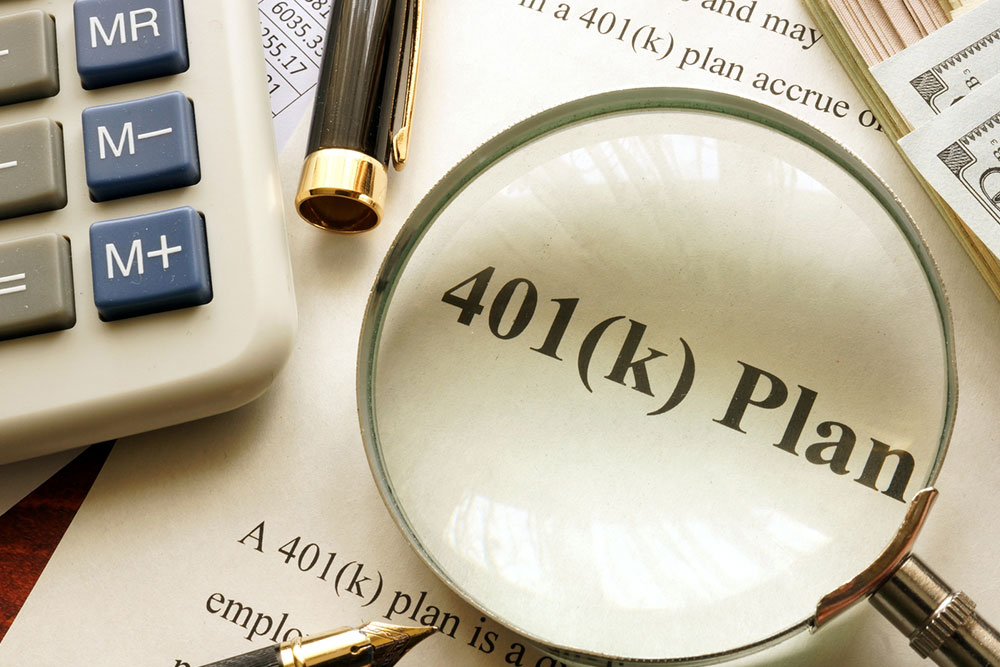
7 common mistakes people make with their 401(k) plan
A 401(k) is a qualified retirement plan companies offer employees as part of their benefits package. Through this plan, an employer matches an employee’s contribution towards their retirement fund. Though it is not legally required, many companies offer 401(k) plans to become eligible for tax benefits. Employers are, in many cases, given exemptions for state and payroll taxes, whereas the contributions made by the employee are considered deductions from their federal income tax.
Common mistakes people make with their 401(k) plan
1. Not knowing the different 401(k) accounts
Before signing up for a 401(k) plan, it is important to know the characteristics and features of the different 401(k) accounts so that one can plan one’s savings accordingly. This scheme offers two types of accounts – Traditional 401(k) and Roth 401(k). One can choose the account that is suitable for one’s needs. The basic difference is that in a traditional 401(k), the contributions are made with pre-tax income, while in a Roth 401(k), it is made after-tax income. Roth 401(k) is currently more popular as it offers better tax benefits and wider investment options.
2. Withdrawing early from the 401(k)
The 401(k) plan is designed to be a retirement-support fund; hence, checks and balances are in place to deter the use of the funds before retirement. There are strict penalties for early withdrawal or using the money to pay personal debts or credit card debt. If one withdraws before the age of 59.5, one may face a 10% penalty, above the income tax on the distribution. One can also lose out on the fund’s growth. Hence, taking early withdrawal or using the 401(k) funds to settle other personal debts is generally discouraged.
3. Not increasing the contribution amount
Many participants do not increase the contribution amount to their 401(k) even after many years of work or an increase in salary. This can result in disproportionate savings that do not grow according to their salary. Experts recommend that one should earmark up to 15% of their salary for 401(k), with an increment of 1% to 2% yearly, in line with their annual salary hikes. It is important to note that the contribution has an upper limit, which varies from year to year.
4. Not taking ownership of 401(k)
There is a common misconception that employers are responsible for 401(k) plans since they are employer-sponsored accounts. However, the reality is that employees have complete control over their 401(k) plans. Employees must take ownership of their 401(k) plan, make informed decisions regarding investments, and regularly monitor the account’s performance. By doing so, individuals can make decisions based on their retirement goals and plans.
5. Not being aware of investment fees
While the investment options are lucrative, they are not without costs. Everyone has to pay multiple fees for 401(k) investments. These fees include:
– Annual expense fees for the fund manager
– 12b-1 fees – about 0.25% to 1% for fund’s advertising
– Sales loads – commissions for those who sell the funds to an individual
– Portfolio turnover
One must be prepared to pay these fees while considering their investment options.
6. Investing aggressively while nearing retirement
Some retirees who have not reached their 401(k) goals may get aggressive and want to invest in high-return funds, which may have high fees. It is better to avoid such funds, as any loss may cause a sudden dip in savings. Hence, it is advisable to have a diversified portfolio from the beginning, invest in multiple types of funds, and periodically reevaluate them to maximize the returns.
7. Not reevaluating and rebalancing investments periodically
While some employees may invest conservatively, some may invest aggressively and do excessive trading. Too much trading may result in high fees and cause a dent in the profits. It is also important to study where one invests the money and make the required changes to grow assets according to one’s 401(k) goals. While some holdings may grow fast, some are steady and grow slowly. One can hire a 401(k) advisor who can help one have a diverse portfolio that helps one reach the amount one wants to save at retirement.
Benefits of a 401(k) plan
401(k) is the largest and most popular defined contribution plan. This plan has become popular because of the tax-saving benefits it offers to employers and employees. Employees prefer to join companies that offer 401(k) because it serves as both a retirement savings plan and an investment fund. Since it is an employer-sponsored plan, the possibility of an equal or matching contribution from the employer is very high. The scope of higher balances in one’s 401(k) plan increases with age and the number of years one works. With so many advantages, 401(k) plans can provide financial stability when a person is older.
After understanding how a 401(k) works and actively monitoring the investments and performance, it will become easier to plan how much one can contribute in the coming years. One will be able to calculate the profits or income that the funds generate. With active participation and monitoring, one can easily reach their 401(k) retirement goals without worrying about a source of income for daily expenses.


